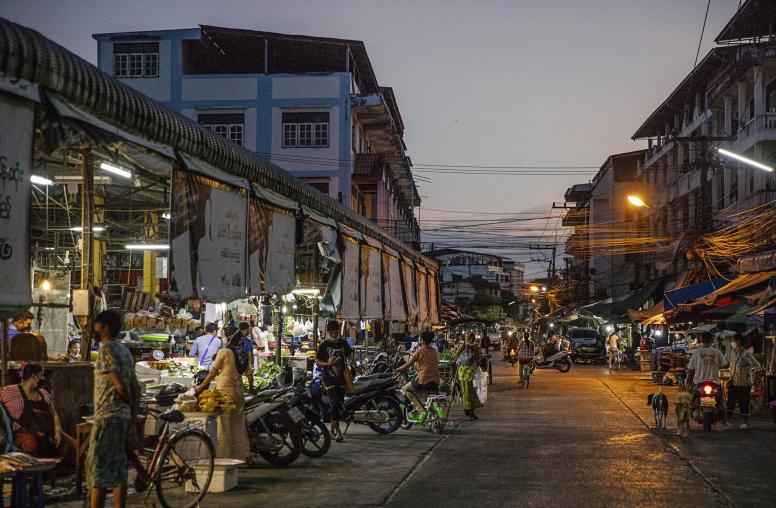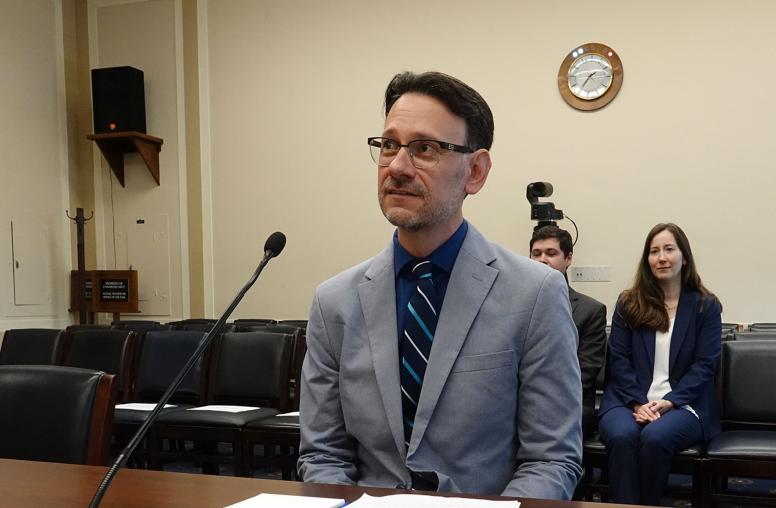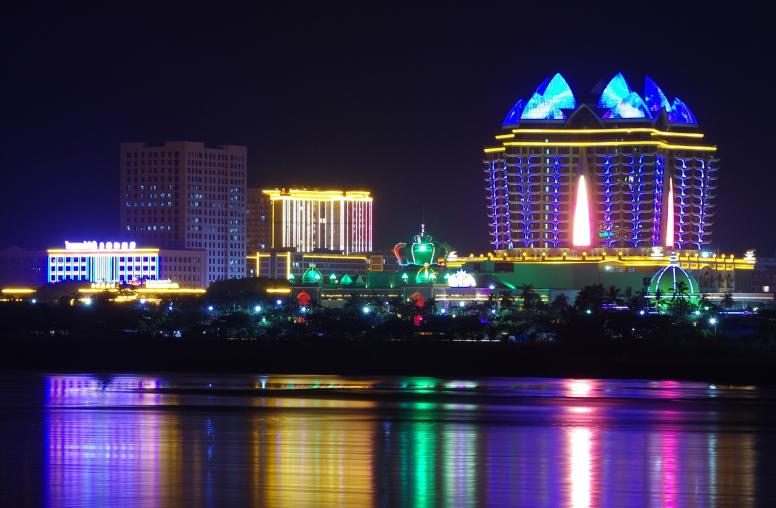A generation after the Khmer Rouge seized power in Cambodia and exterminated an estimated 2 million of its people, that brutal history is largely hidden from young Cambodians. While the country remains heavily scarred by this legacy, the Khmer Rouge regime of the 1970s is still largely unacknowledged in the nation’s schools.

Cambodians who suffered in labor camps or witnessed the executions of loved ones still suffer high rates of post-traumatic stress disorder. Many such victims and their families live alongside former Khmer Rouge cadres and their relatives. For decades, public discussion of the violence “has been constrained because it is very sensitive, both politically and emotionally,” says Khamboly Dy of the independent Documentation Center of Cambodia, which researches what is now known as the Cambodian Genocide.
“I also feel a lot of sorrow and pain because I had many relatives who perished in the regime.” -- Tuy Sokhoeum, teacher
In a bid to heal the nation’s wounds, the center is finally winning a years-long campaign to teach the story—an effort funded in part by the U.S. Institute of Peace. A USIP grant supported training for 600 Cambodian teachers in a new secondary school curriculum about the genocide and human rights.
“This project is helping to heal the profound divisions in Cambodia that have persisted between survivors and perpetrators for the last four decades,” said Katherine Wood, a USIP grants advisor who worked with the Documentation Center to manage the project. “Genocide education is an important step toward preventing violent conflict and future genocide. By training teachers, we are providing the next generation of Cambodians with a better understanding of their shared past, a means of releasing their anger, fear and pain, and a path towards national reconciliation.”
In 1975, the Khmer Rouge guerrilla army seized power and began a bloody revolution to create an agrarian, communist utopia it called “Democratic Kampuchea.” The regime systematically emptied the country’s cities and eliminated potential dissidents, beginning with intellectuals, the educated and religious leaders. It enslaved survivors in rural labor camps where any suspicion of dissent was punishable by death. Roughly a quarter of Cambodians died in the “killing fields.”
The Khmer Rouge was ousted by a Vietnamese army in 1979. Since then, political divisions and the presence of former Khmer Rouge soldiers in Cambodian governments have complicated official efforts to confront that spasm of violence. A 1991 peace accord that ended Cambodia’s wars included concessions that forced the government to purge discussion of the killing fields from school books. Cambodia took more than 20 years to pass a law to seek the arrest of the revolution’s leaders. It took 30 years to begin the first trial.
Four decades after the violence, many young Cambodians have heard about their nation’s trauma only from their parents, in fragmentary accounts so horrific that youth have said in interviews they doubted the stories’ authenticity. But the spread of independent news media in recent years and a public-education campaign by the Documentation Center of Cambodia have increased information and awareness about the history.
The center’s campaign includes forums where residents press their local authorities to preserve sites such as mass graves.
“We are not working to confront the government, but instead to engage it in a strategic way,” Dy said in a telephone interview from Phnom Penh.USIP also worked with the center in 2008 to co-sponsor a conference in Cambodia on war crimes documentation for Afghan human rights workers. The move to discuss the Khmer Rouge trauma has benefited from “an important role by the news media,” including dozens of relatively new radio and TV stations, said Dy.
“They publish the accounts of survivors and of former Khmer Rouge cadres,” Dy said. “And so gradually the government has heard a public desire that this history should be taught in order to prevent such violence from recurring. People feel it’s necessary to build tolerance.”
Teaching Teachers
In 2007, the Documentation Center, based in the capital, Phnom Penh, published a slim volume written by Dy, A History of Democratic Kampuchea (1975-1979). The center then pressed the government to accept it for use as a school textbook.
“The government told us that it was ‘not the right time’” to use the book as a text, but allowed its more restricted use “as a core reference,” Dy said. Still, the momentum toward teaching a once-forbidden history had begun. In 2011, Cambodia’s Education Ministry agreed to include the Khmer Rouge story in the national school curriculum.
The Documentation Center has worked with the Education Ministry to hold workshops throughout the country that now have trained more than 3,000 teachers, said Dy. Workshop participants included both survivors and perpetrators of the genocide, who were able to reflect together on how they could promote healing in their communities. The training course gathered psychiatrists, lawyers and researchers to discuss with teachers how to raise in the classroom a national trauma that is still felt in the homes of many students.
The mix of pain and lack of knowledge about the Khmer Rouge years is not a problem only for students, according to Tuy Sokhoeum, a 31-year-old high school teacher from Kampong Cham province, a lowland of rice-growing villages along the Mekong River.
“I also feel a lot of sorrow and pain because I had many relatives who perished in the regime”—family members he never met, having been born after the Khmer Rouge’s overthrow, he said in a report by the Documentation Center.
“I’ve heard a lot about DK [Democratic Kampuchea] history, but I was never sure whether to believe what I heard,” Tuy said. “Now that I’ve participated [in the training], I’m learning to believe more of what I’ve heard because the workshop provided a lot of materials for me so that I can verify the information.”



